 
Colectomatic Mark III
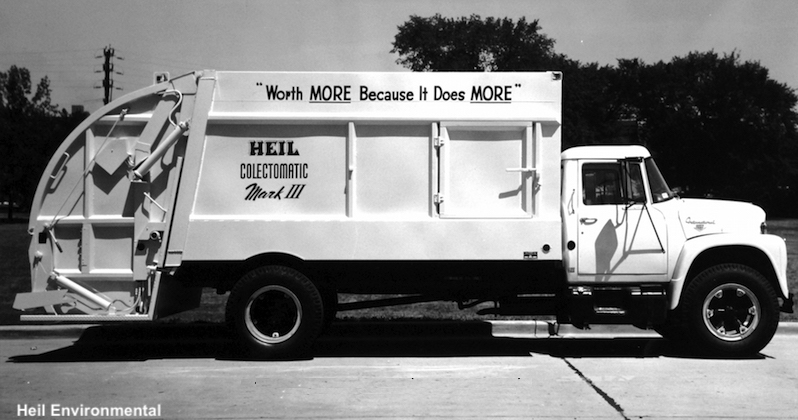
20-yard Heil Colectomatic Mark III mounted on an International Harvester Loadstar. In profile, it was identical to the Mark II
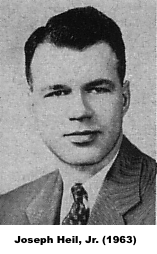 George Murphy, who had invented the original Colectomatic prototype, retired from the Heil Company in 1964 and moved to Arizona. The Colectomatic, and later the Mark II from which it was derived, had transformed Heil from a marginal player in the refuse body industry to one of the top three manufacturers in the United States. Heil suddenly had the most advanced all-around rear loader on the market, the first in the industry with a compaction-ejection system. The acquisition of Load-Lugger in 1962 brought a line of bulk detachable-container bodies, including the Huge-Haul roll-off system. Heil-Quaker Division, which had made home heating systems for over thirty years, was sold off, as refuse truck bodies, tanks and dump bodies become the primary business. A brand new eastern factory branch was opened at Woodbridge, New Jersey, replacing the old facility at nearby Hillside. Regional sales offices, and a complete repair shop for stainless steel and aluminum tankers were housed at the new location. Joseph Heil, Jr., grandson of founder Julius Heil, was by that time vice president of the Body & Hoist Division. He had been on board since the end of World War II, and would ultimately lead the company during this period of great expansion. George Murphy, who had invented the original Colectomatic prototype, retired from the Heil Company in 1964 and moved to Arizona. The Colectomatic, and later the Mark II from which it was derived, had transformed Heil from a marginal player in the refuse body industry to one of the top three manufacturers in the United States. Heil suddenly had the most advanced all-around rear loader on the market, the first in the industry with a compaction-ejection system. The acquisition of Load-Lugger in 1962 brought a line of bulk detachable-container bodies, including the Huge-Haul roll-off system. Heil-Quaker Division, which had made home heating systems for over thirty years, was sold off, as refuse truck bodies, tanks and dump bodies become the primary business. A brand new eastern factory branch was opened at Woodbridge, New Jersey, replacing the old facility at nearby Hillside. Regional sales offices, and a complete repair shop for stainless steel and aluminum tankers were housed at the new location. Joseph Heil, Jr., grandson of founder Julius Heil, was by that time vice president of the Body & Hoist Division. He had been on board since the end of World War II, and would ultimately lead the company during this period of great expansion.
In the wake of the Mark II's success, Heil's competition had not been sitting around idly, and the early 1960s saw the gradual adoption of some form of ejection discharge in rear loaders industry-wide. The Pak-Mor RL-15 and Load-Master LM series were all-new models introduced with telescopic ejection from their inception. Leach retrofitted the single-stage Push-Out ejection system to their existing Standard Packmaster and 2-R, the latter becoming an even more formidable packer. Gar Wood didn't have an ejection body ready until late '64 with the appearance of the T-series refuse truck. This was a complete refuse vehicle made with unit construction, front wheel drive and unusual front-and-rear-loader combination bodies. The radical new Gar Wood undoubtedly made waves when introduced at the 1964 APWA show, since no American company had ever built their own complete refuse vehicle since American LaFrance back in 1933. Nevertheless, Heil general sales manager Harold J. Row assured the press that Heil had no plans to offer complete trucks.
Heil opted to stay the course with the Mark II, the model that had started the trend to ejection rear loaders in the first place. An improved version was introduced in September of 1964, dubbed the Colectomatic Mark III. This was not really a new model, but a refinement of the existing Mark II, and is visually almost identical to its predecessor. The most distinguishing feature of the Mark III was the new heavily reinforced packing panel, with improved geometry to help reduce material wedging. Other less-visible improvements were made to the tailgate cross-members, electric controls, plus the addition of an optional abrasion-resistant hopper and reversible cutting edge for the packing panel. Body sizes of 13, 16, 20 and 25-cubic yards remained, with the optional arm-hoist for containers up to 3 yards.
Heil had a good thing going, and had no reason to tamper with that success. History has shown this to have been the correct path, as the proven Colectomatic Mark III racked up ever-more new customers, and Heil grabbed larger chunks of the rear loader market throughout the decade. A huge fleet of Mark IIIs went to Los Angeles, where Heil locked-up the Bureau of Sanitation contract for a decade. In 1968, Heil sold 400 Mark IIIs to New York City, their first sale to the DSNY since the 1940s. Despite all of the fanfare, Gar Wood's over-engineered T-series quickly foundered, and while they still had "conventional" ejection-type rear loader bodies, the experiment had been costly, and undoubtedly contributed to their financial troubles by 1968.
As for Heil, a temporarily weakened Gar Wood, combined with the strong sales of their Colectomatic Mark III, gave the company some breathing room. Ultimately, the challenge would be to come up with a bulk-type rear loader to compete with the likes of the 2-R Leach, which was the biggest threat on the horizon. As the 1960s came to an end, Heil Company instead aimed to bolster their standing in the detachable container market, by closing a gap in their product line with an all-new commercial front loader body.
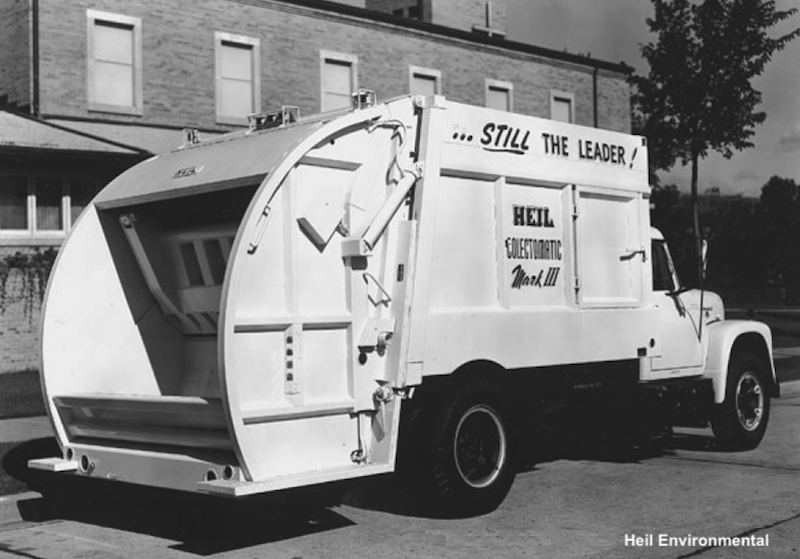
The heavily reinforced Mark III packer blade distinguishes it from its predecessor. This a 16-yard model.
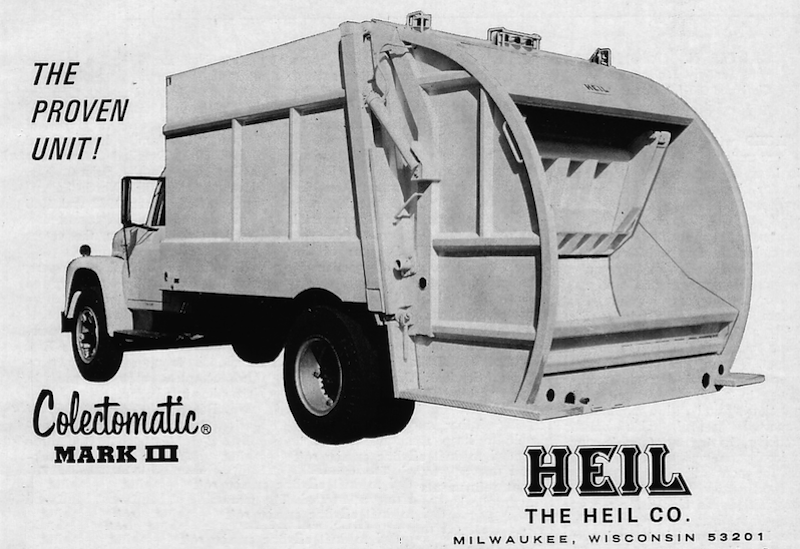
In four short years, the Duo-Press system had indeed been proven, and forever changed the industry
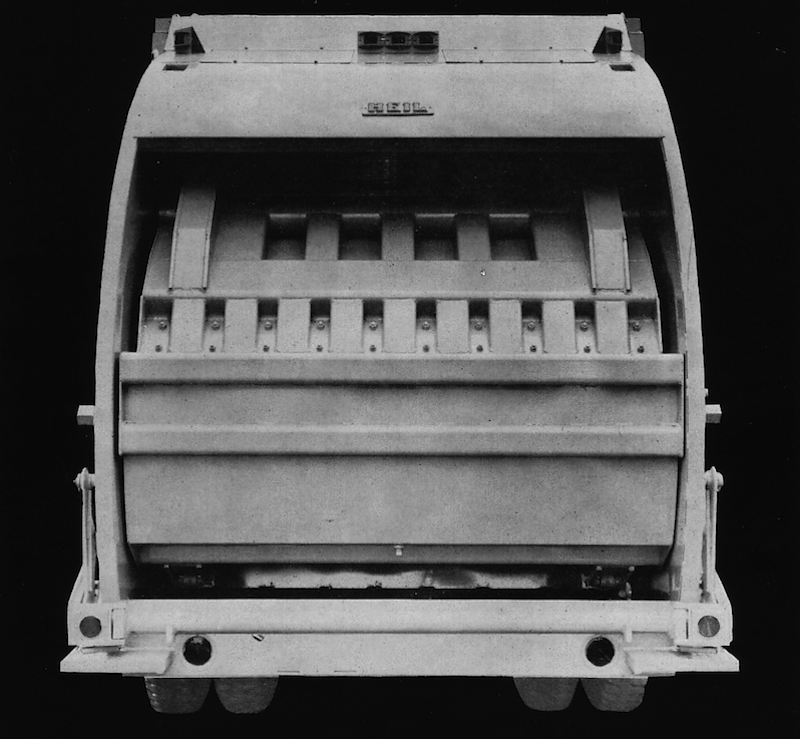
Close up of 25-yard tailgate. Bolts for the optional cutting edge are visible along lower edge of packer blade
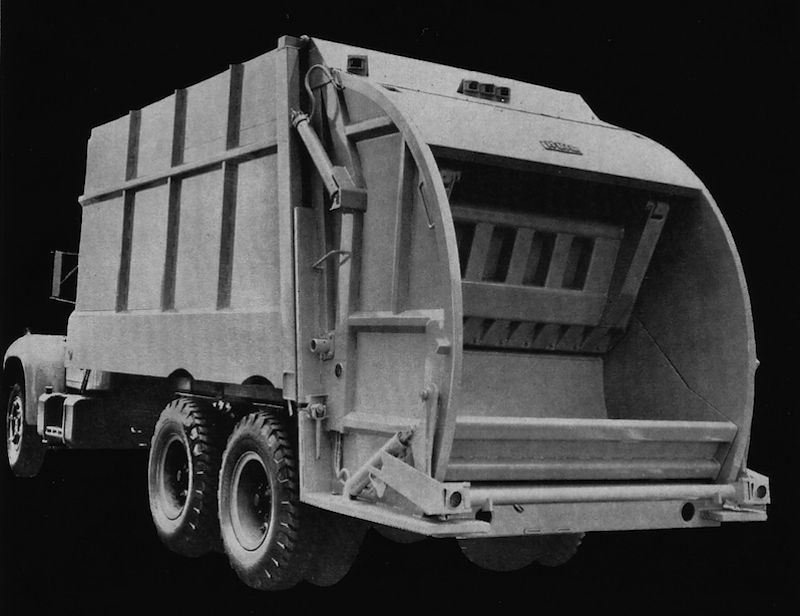
25-yard Mark III on tandem chassis with Heil arm-type container hoist and hopper extension.
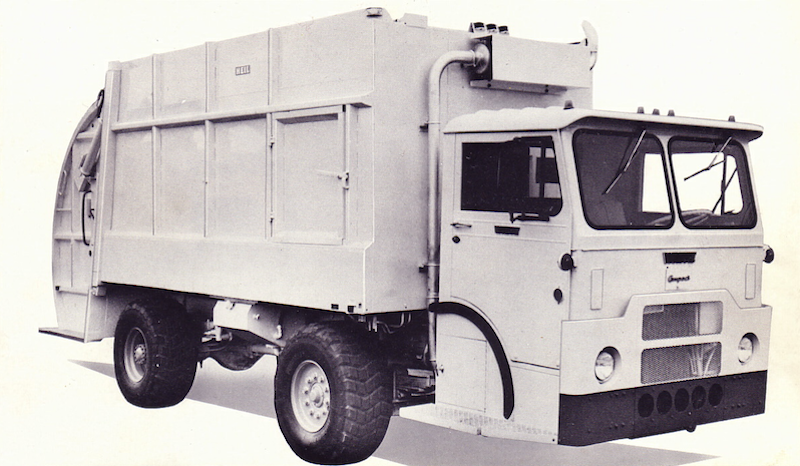
25-yard Mark III on the White Alleycat, which was basically the REO Wesco Jet chassis mated with the cab used on the White Compact series.
Front axle setback achieved almost 50-50 weight distrubution, allowing the 25-yard box to be carried on just two axles. Turning circle
was impressive for a vehicle of this size, and GVW ratings were over 4,000 pounds less than a tandem chassis with the same body.
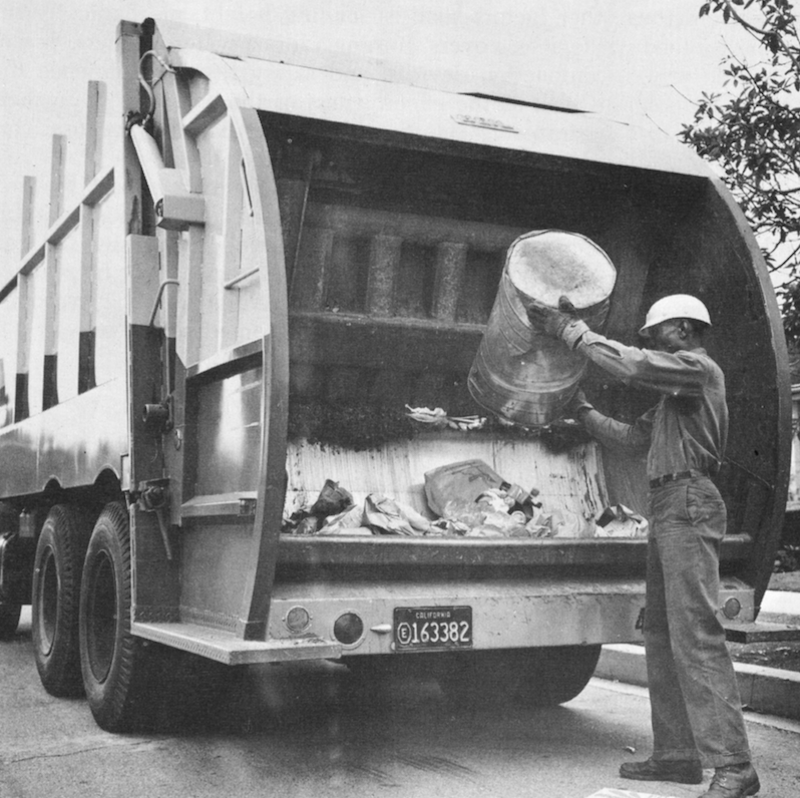
The City Of Los Angeles Bureau of Sanitation bought some Mark IIs in the early 1960s, and after a brief fling with Pak-Mor went completely to Heil.
The BoS ran a large fleet of 25-yard Mark III's on White and International tilt-cabs well into the 1970s.
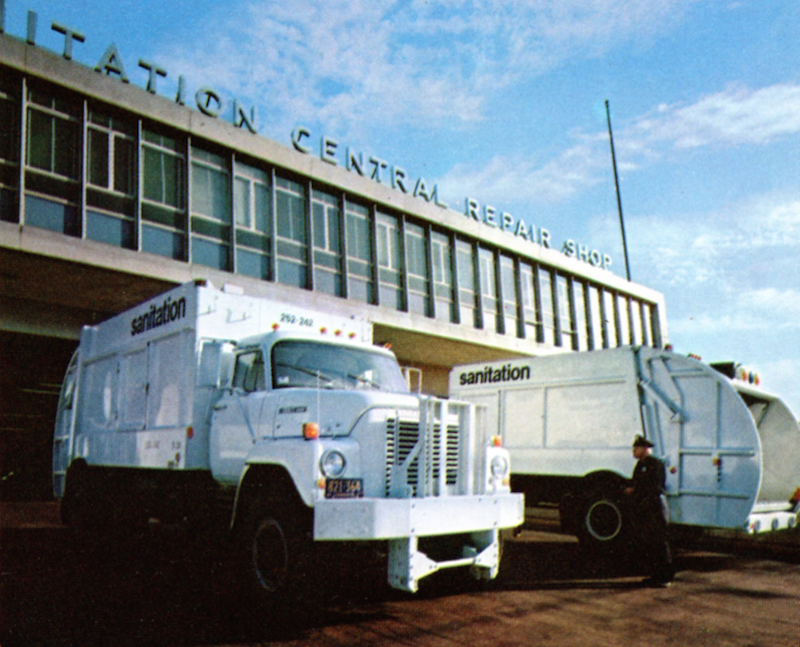
In 1968, the City of New York Department of Sanitation ordered 400 Mark IIIs with 20-yard bodies on International Harvester Fleetstar A chassis.
It was the first Heil fleet sale to the DSNY in almost 30 years, dating back to the old escalator-conveyor era.
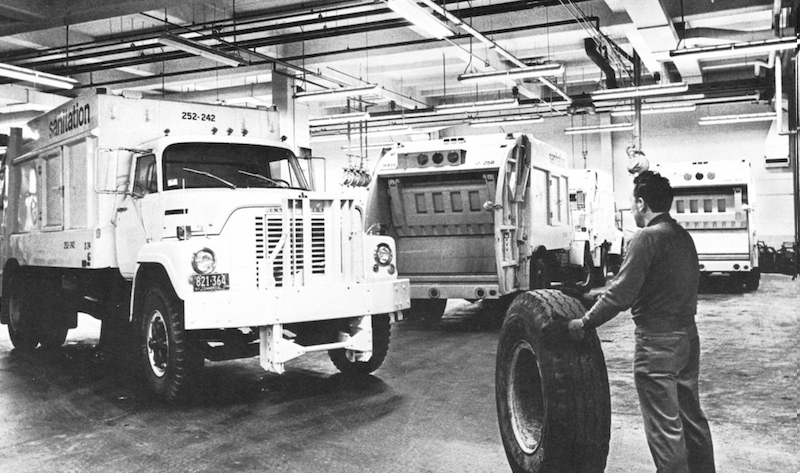
A trio of Mark IIIs in the DSNY central repair shop around 1969
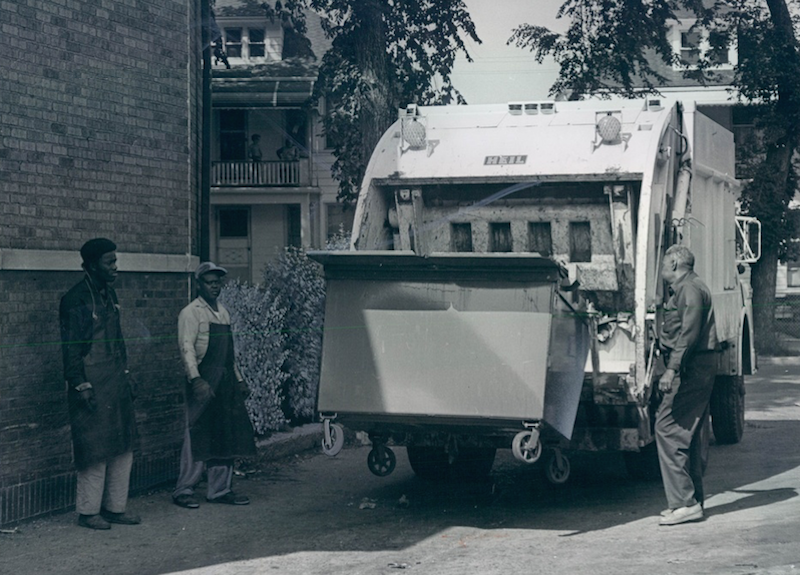
Heil even sold Mark IIIs in Gar Wood's back yard, to the Detroit Department of Public Works.
Here, a DPW crew empties a 2-yard container using the Heil arm-type hoist
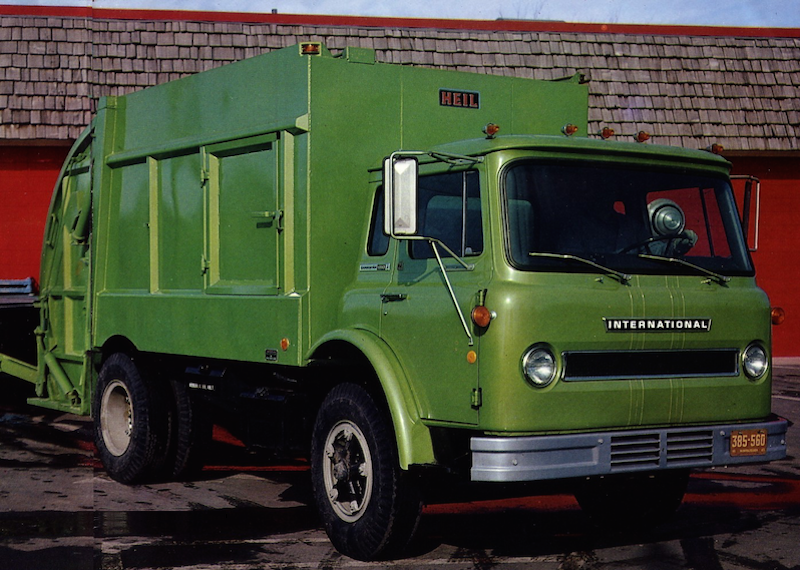
Stunning metallic green Mark III on a 1971 International Harvester Cargostar tilt-cab



5/29/17
© 2017
All Rights Reserved
Photos from factory brochures/advertisements except as noted
Logos shown are the trademarks of respective manufacturers
|
| |